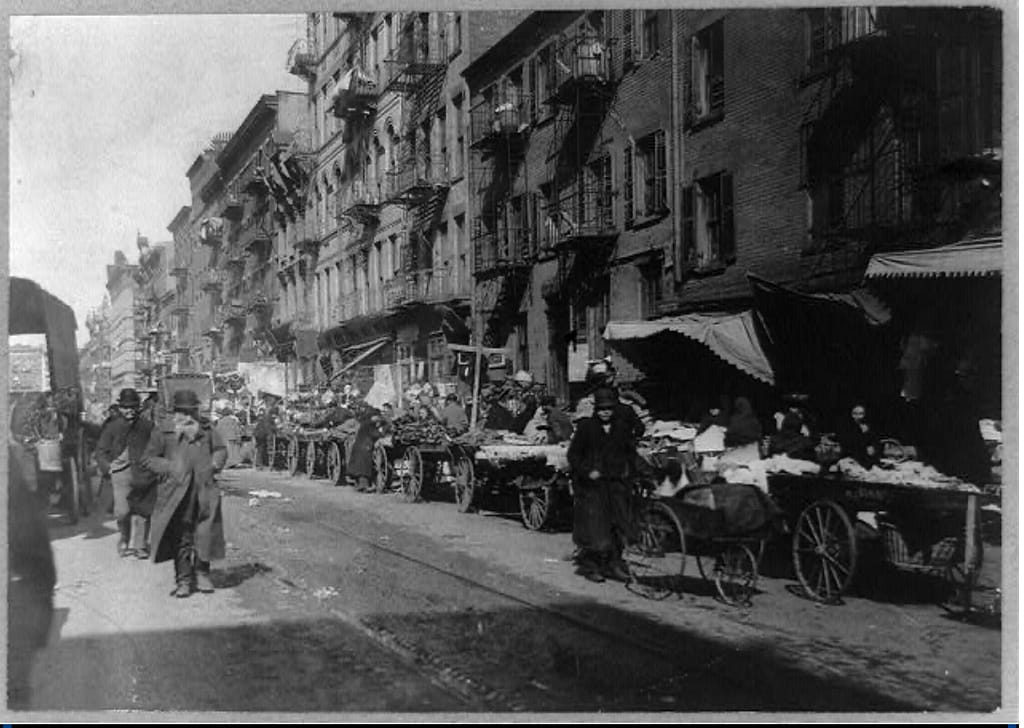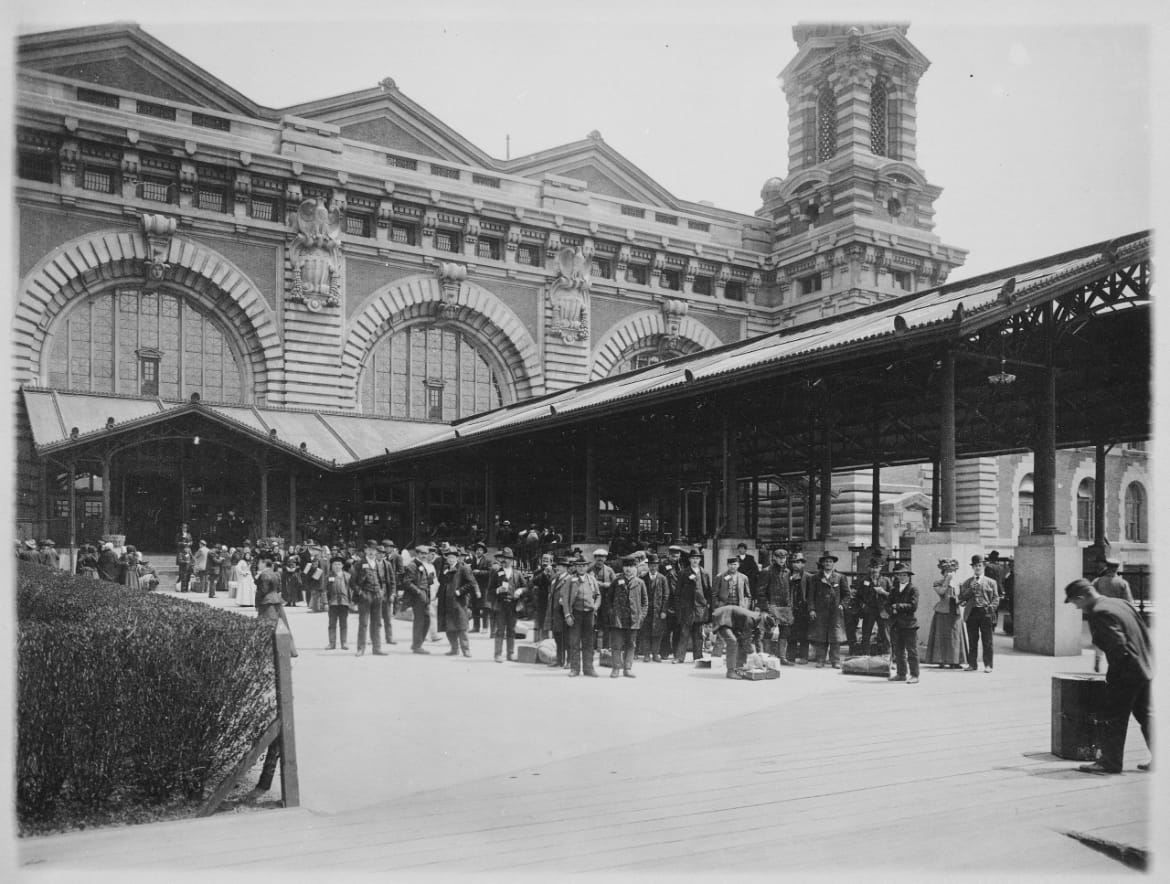The island of Manhattan in the mid-19th through early 20th century was a microcosm of the larger immigrant history of the U.S. Everyone both mixed and didn’t mix. The waves of new languages, cultures, and customs rubbed alongside the many generations that continued to move uptown as the decades progressed.
Irish immigration
My story takes place in 1910 when nearly half of city was born somewhere else. The vast majority of those new immigrants were crammed into the lower half of the island—about 75 percent of New Yorkers at the time were either immigrants or children of immigrants.
In 1910, most immigrants came from southern and eastern Europe, including Russia. They were from non-English speaking countries whose customs were very different from previous immigrants. As each new wave arrived, it took its place on the lowest rung of the ladder, leaving earlier immigrant groups to move up.

A few Irish immigrants had come when New York was a Dutch colony, but the Irish population increased substantially when the British took over in 1664. During the colonial era, most Irish immigrants to New York were Ulster Scots and were typically from wealthier families—merchants and artisans, for example. Numerous Protestant and Catholic Irish came over as indentured servants as well.
But in the 1830s, when a devastating potato blight hit Ireland, destroying a basic food crop (the history is actually quite complicated—a good explanation can be found here), the number of poor Irish immigrants, mostly Catholic, skyrocketed. In the decades to come, these immigrants built much of the city as we know it today, including the New York street grid and Central Park, and the women supplied most of the uptown domestic work.
Eventually, the descendants of some of those immigrants ran the city—from the Tammany Hall political machine to the police department. The fact that the Irish run the police is central to my story. My Irish protagonist and one of her brothers are both police employees (she’s a typist, he’s a roundsman—what beat cops were called then), but because she’s embedded in the Campanian community in the Bowery through her husband, she has an entry point for the investigation.
My own part of the immigrant experience
My own New York immigrant family story begins in 1860. My great-great grandfather, Richard Arthur Leslie, was born in Ireland in either 1849, 1850 or 1851 (census records were a bit iffy on the birthdates). He came over with his father Arthur, mother Eliza Jane, and siblings Catherine, James, and Francis. Arthur was listed in the 1860 census as a laborer in New York City. I found one account that indicates that he might have worked as a “felt hatter” (if someone knows more about that occupation, please drop a comment!).
Richard appears to have been naturalized in 1865, and by 1870, was working as a liquor dealer. According to the 1880 census, he had moved to Fishkill Township/Matteawan in Dutchess County, just north of New York City, and was working as a retail liquor dealer. He married Sarah Shawger (possibly born in New Jersey) and in 1878, they welcomed my great grandmother Ada. By 1892, Richard was a saloon keeper in Fishkill. Fishkill Landing and Matteawan were united in 1913 and renamed Beacon. Richard died in 1926 in Beacon. I have vague memories of my great grandmother Ada, who died in 1976, two weeks after her 98th birthday.

Turning family history into a story
Of course, I needed to figure out how to integrate Fishkill into my story. My protagonist Rose De Rosa’s parents have done well enough for themselves on the East Side that they move upstate with several of Rose’s siblings… to Fishkill to run a tavern. When the investigation has a lead on a suspect who has fled to Fishkill, Rose is brought along to talk to the locals, including her estranged family.
Rose was born Rose Whelan, the daughter of an Irish immigrant mother and first generation Irish American father. She defies her family by marrying a recent immigrant—an Italian to boot. Rejected by her family for her decision, she lives with her in-laws in the Bowery, on Mulberry, the street that was home to immigrants from Campania. Her husband Giuseppe (Pino) dies before the start of the story, but his death has left her as the de facto head of the De Rosa family: her father-in-law, bedridden with grief, and her 17-year-old sister-in-law, who works in a shirtwaist factory.

Her closest friend is Malka (Mollie) Kryefsky, a Russian Jewish immigrant who sings opera in the Bowery theaters because she can’t be hired uptown in the professional opera houses. She’s also been blackballed for agitation in the garment factories—an issue that will come into play especially in the second in the series.
Many stories I’ve read about this time period in New York City tend to focus on one immigrant group, sometimes with a conflict that might intersect with another group. For me, I wanted to explore how, despite having areas that mainly housed one group or another (streets that were known as Little Jerusalem or Little Sicily, for example), everyone being crammed together meant in addition to conflict, there was also friendship and love and community.
Additional resources
There are a lot of great books on immigration during this time period in New York. Here are a few good ones to start with.
City of Dreams: The 400-Year Epic History of Immigrant New York by Tyler Anbinder (I also recommend his excellent book on the Five Points neighborhood, which is mid- to late-19th century)
Lower East Side Memories: A Jewish Place in America by Hasia R. Diner
Memories of Migration: Gender, Ethnicity, and Work in the Lives of Jewish and Italian Women in New York, 1870-1924 by Kathie Friedman-Kasaba
An Unlikely Union: The Love-Hate Story of New York’s Irish and Italians by Paul Moses
Low Life: Lures and Snares of Old New York by Luc Sante
Featured image: Ellis Island, 1910, Source: U.S. Library of Congress


Leave a Reply